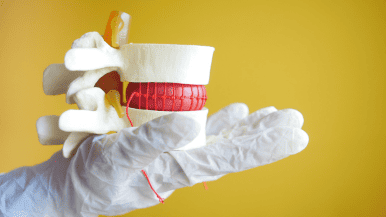 What is plantar fasciitis?
What is plantar fasciitis?- Why would I get plantar fasciitis?
- How is plantar fasciitis diagnosed?
- What treatments exist for plantar fasciitis and does walking help?
- Can I do anything to help my plantar fasciitis?
The majority of Americans think that their feet are “the least important body part in terms of our overall health and wellbeing.” However, they would likely change their minds should they be afflicted with plantar fasciitis.
Foot pain is all too common with 77% of Americans reporting they suffer in this way. There are 52 bones, joints, ligaments, muscles, and tendons in your feet. Your feet are complex and have a big job to do, so when they hurt, it affects both your mobility and your quality of life.
Plantar fasciitis is a condition that sends sharp shooting pains across the bottom of your feet. The things you take for granted like getting out of bed or walking to the bathroom in the morning just aren’t easy anymore. What causes this common disorder and does walking help? How can you stop the pain of plantar fasciitis and help your poor aching feet?
What Is Plantar Fasciitis?
The plantar fascia is the ligament or the long, flat piece of tissue on the bottom of the foot that runs from the toes to the heel. The plantar fascia follows the arch of your foot and is shaped like a bow string. Its job is to provide cushioning for the impact of running and walking and to support the arch of your foot.
Sometimes, this ligament develops inflammation, a condition known as plantar fasciitis. Symptoms of plantar fasciitis include:
- Sharp stabbing pain in the heel or bottom of your foot
- Burning across your foot
- Foot pain after exercise
- Stiffness and mobility issues
One clear symptom of plantar fasciitis is pain when you take your first steps after being off your feet for a time. For example, when you wake up in the morning and put your feet over the side of the bed to stand up, the pain will be worse. Over a few steps the pain may get a little better, but as the day goes on, the pain can return with a vengeance. Exercise may exacerbate the problem.
Why Would I Get Plantar Fasciitis?
 What makes some people come down with plantar fasciitis while others do not? There are several reasons you could be afflicted with plantar fasciitis, including:
What makes some people come down with plantar fasciitis while others do not? There are several reasons you could be afflicted with plantar fasciitis, including:
- You have excessive pronation, which is when your feet roll inward too much when walking
- You have flat feet or excessively high arches
- You’re on your feet a lot on hard surfaces such as in a factory, in retail, or a warehouse
- You’re overweight, which puts stress on your feet
- You switch shoes or increase your activity level
- You’re wearing bad shoes that are cheap, worn out, or don’t fit correctly
- Your calf muscles or Achilles’s tendons are tight
Runners or athletes that run during workout can come down with plantar fasciitis. Ballet dancers, long-distance marathoners, and aerobic dance instructors and their students can get plantar fasciitis. Plantar fasciitis is also common in people aged 40 to 60 but youth athletes can even get it. Arthritis can even cause the plantar fascia to inflame.
Plantar fasciitis can come on suddenly or over time and if you don’t have it looked at it can worsen and become chronic. Many people try to compensate for the pain of plantar fasciitis by changing how they walk. This can lead to back, hip, or knee problems.
How Is Plantar Fasciitis Diagnosed?
Your doctor can diagnose plantar fasciitis. If you’re experiencing stinging, burning pain on the bottom of your foot and heel, see your doctor. There’s no reason to suffer and if you wait, your quality of life can be negatively affected. The plantar fasciitis can even worsen to the point where you can barely walk.
During an initial exam when plantar fasciitis is suspected, your doctor will do a history and physical exam of the foot to determine when and possibly why the pain started. The doctor will try to find out how much swelling and tenderness you’re experiencing. Your ankle and foot reflexes will be tested and the alignment and range of motion will be determined.
What Treatments Exist For Plantar Fasciitis and Does Walking Help?
Plantar fasciitis can be treated. Every patient is different and some patients even receive relief from their symptoms by simply changing shoes. Walking around after lying or sitting for a time may ease plantar fasciitis symptoms as the ligament stretches out. However, the pain will gradually worsen throughout the day making you very uncomfortable and affecting normal daily activities. In fact, walking may actually inflame the plantar fascia more, leading to an extension of your treatment.
While it’s not walking alone that could further inflame the ligament, if you’re not wearing the right shoes or are exerting yourself too much, the plantar fasciitis can flare up.

Treatment for plantar fasciitis can take six to nine months after you and your doctor settle on a treatment plan, which could include:
- Avoiding running or walking on hard surfaces
- Changing your shoes for ones that support the arch and cushion the foot
- Icing the foot and heel
- Prescribing a foot brace for plantar fasciitis to wear at night or during the day
- Resting and elevating the foot
- Seeing a physical therapist who can teach you exercises to stretch the plantar fascia
- Steroid shot in the bottom of the foot to reduce inflammation
- Taking over the counter anti-inflammatory medications such as ibuprofen and aspirin
- Toe and calf stretches several times a day
Your doctor may try several non-invasive treatments before considering a steroid shot or even surgery to alleviate the problem. In severe cases, an orthopaedic surgeon may perform plantar fascia release to make small cuts in the ligament to release the tightness and alleviate pain.
When it comes to plantar fasciitis treatment, the best advice is to be patient. Relieving the pain can take some time. Within a few weeks after treatment you’ll notice your symptoms are gradually going away.
Can I Do Anything to Help My Plantar Fasciitis?
If you have or suspect that you have plantar fasciitis, see your doctor. You don’t have to suffer through the pain. Especially when an experienced team is nearby. Advanced Orthopaedic Centers specializes in plantar fascia release surgery as well as other non-invasive approaches to help your body heal



